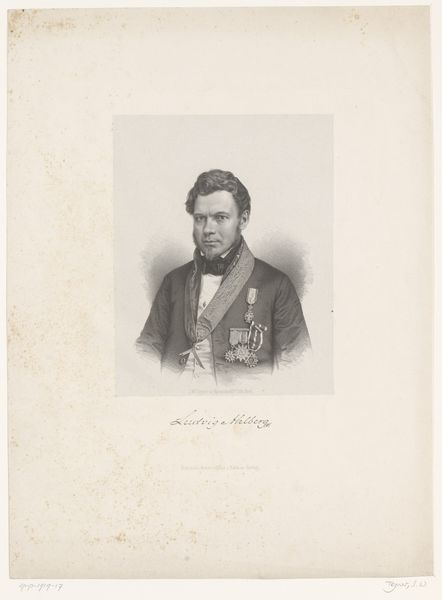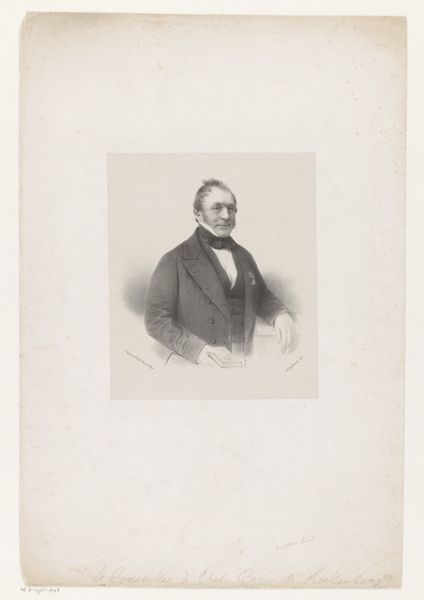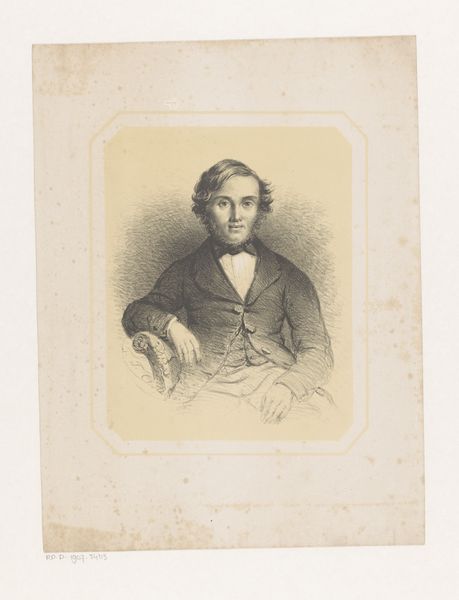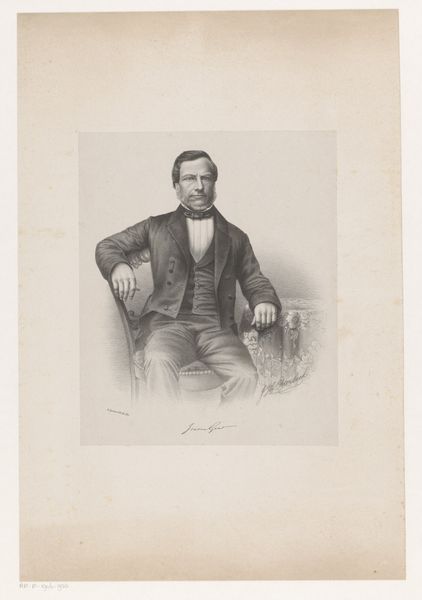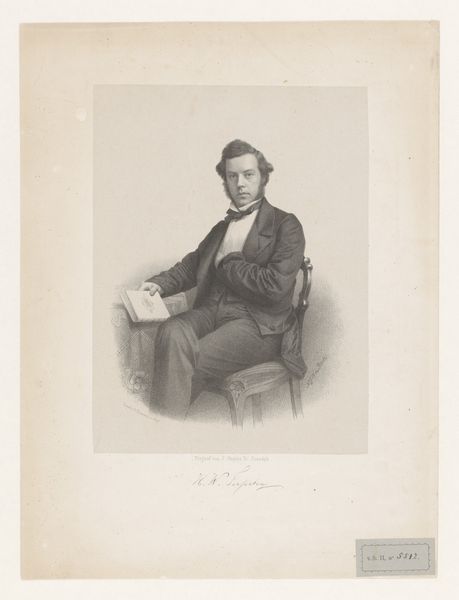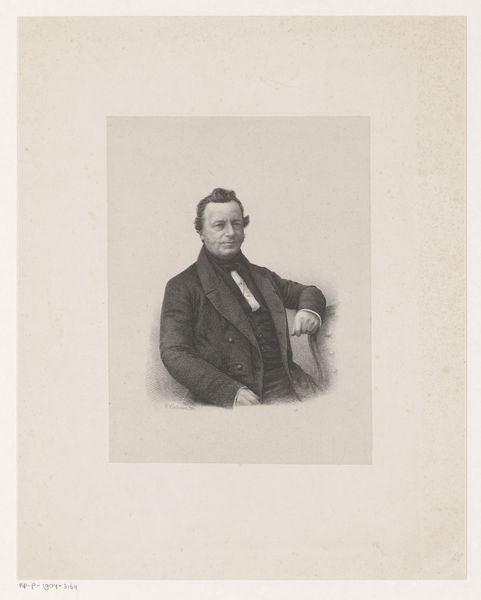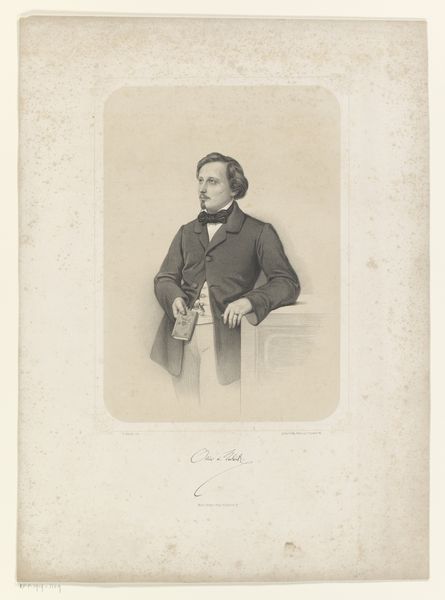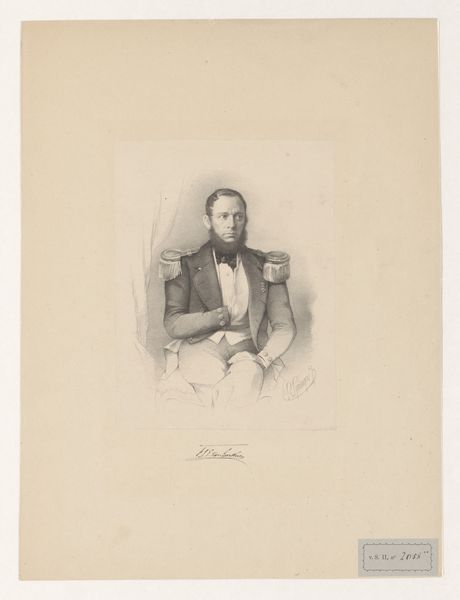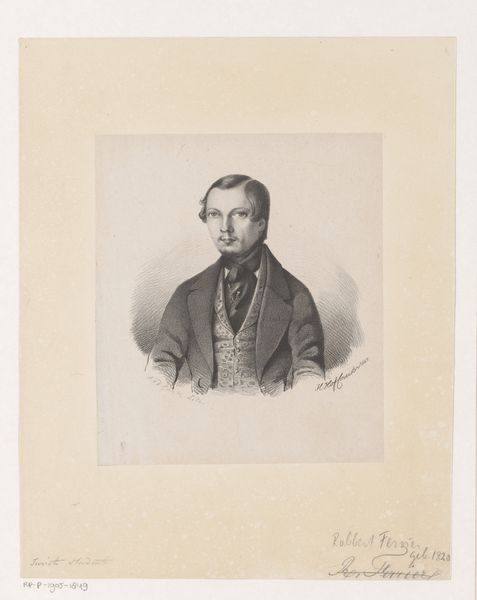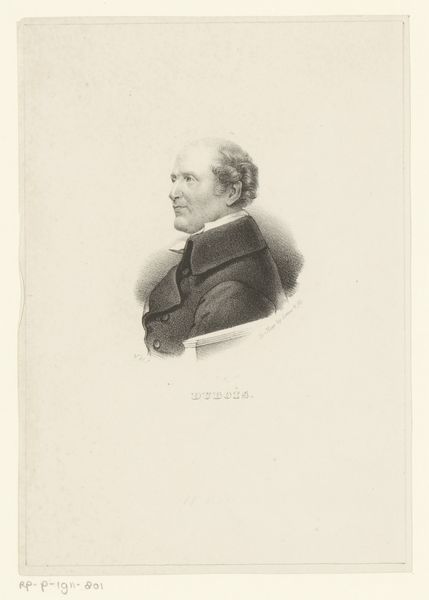
drawing, print, graphite
#
portrait
#
drawing
# print
#
pencil sketch
#
pencil drawing
#
graphite
#
realism
Dimensions: height 455 mm, width 355 mm
Copyright: Rijks Museum: Open Domain
Curator: Let’s turn our attention to "Portret van D. Hartevelt," a drawing by Bernardus Theodorus van Loo, made sometime between 1826 and 1892. What strikes you first about this portrait? Editor: The stark realism, immediately. It’s almost photographic in its detail, yet undeniably hand-rendered. The sitter seems intensely present, yet the graphite gives a sense of melancholy. Curator: The portrait captures the rise of the middle class and the increasing importance of individual representation. The sitter, D. Hartevelt, likely commissioned this work to project a certain image of himself: respectable, intellectual, a man of his time. These drawings offered a form of social mobility, allowing individuals to assert their place in society. Editor: Indeed. Note how Van Loo expertly uses light and shadow to sculpt Hartevelt’s face. The delicate hatching emphasizes the texture of his coat, contrasting with the smooth skin, all while keeping within a strict monochrome palette. There's a palpable tension between restraint and expressiveness in this technique. Curator: Portraits like this also fulfilled an important function in an era before mass photography: memorialization. These images helped families preserve the likeness of their loved ones and important figures within their social circles. Editor: Precisely, the artist does employ very fine, thin lines that remind of prints produced mechanically, the signature in the lower register contributes to this illusion as well. So the image blurs the function and style of two different media. What would this accomplish in social terms? Curator: It situates the sitter between established, aristocratic forms of portraiture and more accessible modes of representation, signaling a kind of modern identity. Editor: Considering the cultural context and skillful execution, this drawing reveals the potency and role of individual representation during the 19th century. Curator: It provides us with a direct glimpse into the era's visual culture and its social dynamics.
Comments
No comments
Be the first to comment and join the conversation on the ultimate creative platform.
